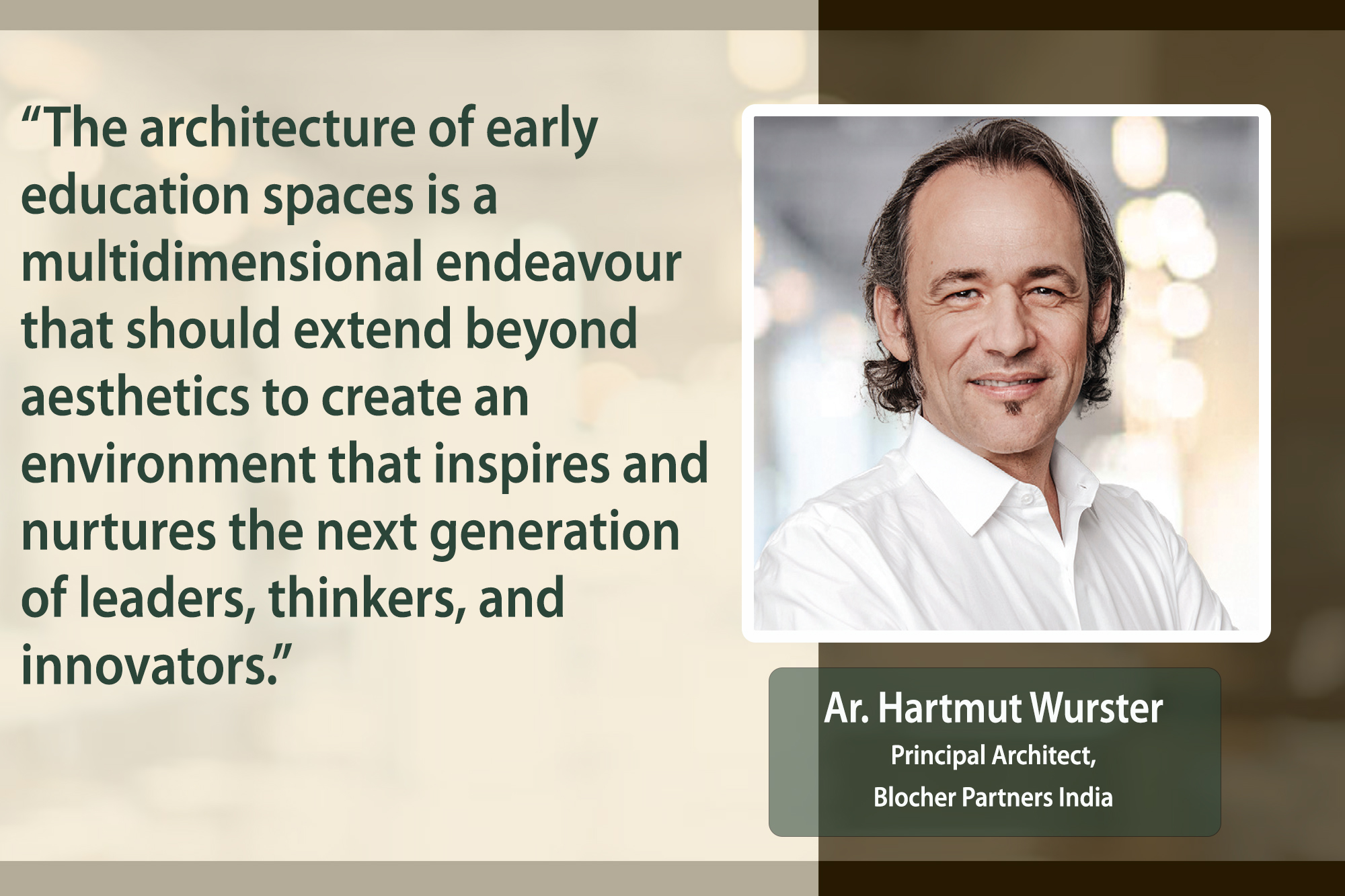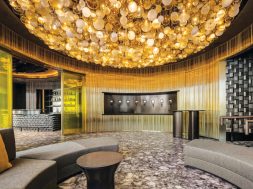Designing spaces to inspire young minds

Physical spaces must be considered in the dynamic landscape of education, especially in early education.
These formative years are crucial for a child’s development, and the environment in which they learn plays a pivotal role in shaping their minds. As the education sector transforms, integrating architectural concepts in early education spaces is an emerging trend that holds great promise. In this article, Ar. Hartmut Wurster, Principal Architect at Blocher Partners India, shares his insights on the significance of architecture in early education and its potential to foster holistic learning experiences.
Early childhood education has become a foundation for lifelong learning and development. These years, typically from birth to eight years old, are a period of rapid cognitive, emotional, and physical growth. The child’s early experiences can provide a solid or fragile foundation for later learning, development and behaviours. Children are sponges for information, and their learning experiences during this stage can have a lasting impact. The architecture here can significantly impact by exploring innovative concepts of various teaching methods like Montessori or Reggio Emilia to design spaces stimulating curiosity, creativity, and critical thinking while providing a sense of security and belonging.

Effective learning is closely tied to the quality of the learning environment, and natural light and ventilation play a pivotal role in enhancing the atmosphere within the classroom. With diverse climates, ranging from scorching summers to monsoons, innovative architectural concepts are essential to optimise these natural resources while ensuring the comfort and concentration of young learners. Large windows, shading devices, and well-planned cross-ventilation can create a comfortable and productive learning space. Our recent project, Toy Blocks in Ahmedabad, incorporates large openings and recessed windows, fostering an inviting learning environment.
Early education is not confined to the four walls of a classroom. Hence, outdoor learning spaces in institutions are equally important. Educational architecture must prioritise creating outdoor learning areas where children can explore, learn about the environment, and develop an appreciation for the natural world. Designs should include outdoor classrooms, gardens or courtyards, and natural elements to develop a stronger connection to the environment while enjoying the advantages of outdoor learning.

Embedded within the context, flexibility is key in educational spaces and providing a variety of learning zones is essential. Creating multi-purpose spaces that can be easily reconfigured for various activities, such as collaborative projects, arts and crafts, and quiet reading, allows educators to cater to the specific needs of their children. Our project, Toy Blocks, a play school in Ahmedabad, offers various flexible learning zones for young learners to explore different activities.
Along with other parameters, the architecture of early education spaces should be designed to stimulate young minds that target developing their senses. This involves using colour, texture, and the arrangement of educational materials. Incorporating vibrant colours, captivating murals, and attractive furniture can engage and inspire children. Additionally, spaces should be equipped with age-appropriate learning materials, fostering a sense of curiosity and exploration.
For more info visit : https://blocherpartners.com/en
17
Cookie Consent
We use cookies to personalize your experience. By continuing to visit this website you agree to our Terms & Conditions, Privacy Policy and Cookie Policy.










